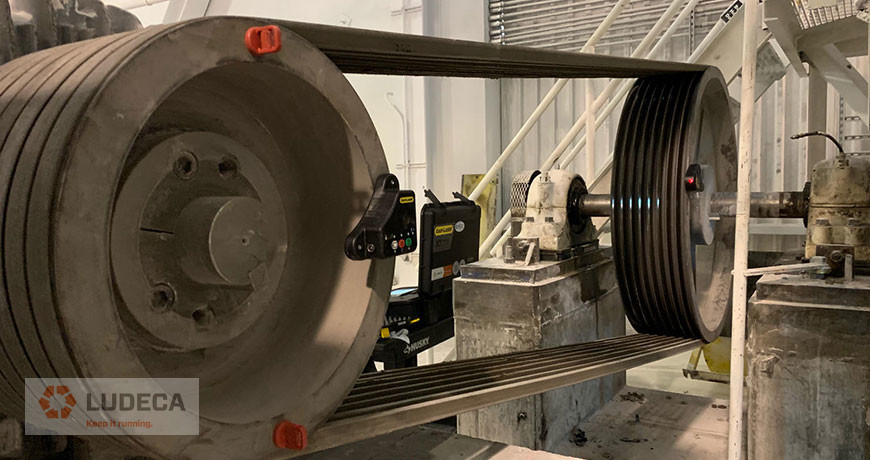How important is belt alignment?
Misalignment can occur between the driver and driven components no matter what mechanism is used to couple them together. This includes belt-driven equipment as well. Unfortunately, proper alignment of belt-driven equipment is frequently considered non-critical and often forgotten about by maintenance departments. Belt misalignment is one of the main causes of reduced belt life and other equipment reliability issues that result.
Sheave misalignment and many other belt defect conditions can be detected with proper vibration analysis techniques. Characteristics such as 1×, 2×, and other multiples of belt frequency will be evident to the vibration analyst depending upon the specific type of belt defect present. For example, sheave misalignment usually results in high axial vibration at shaft turning speed in both the driver and driven equipment.
How do you prevent belt misalignment and the unwanted reliability issues that result?
The best method is to use a laser alignment system designed specifically for this type of application. This technique will provide a very accurate, inexpensive, and labor-reducing method to ensure the belt-driven equipment in your facility is properly aligned. Maintenance employees can be trained very easily and quickly to incorporate proper laser belt alignment techniques into their everyday maintenance activities. The return on investment is very quick with this type of laser alignment system.
How does a laser pulley alignment system designed specifically for belt applications work?
Systems such as the Easy-Laser XT190, DotLine Laser, and SheaveMaster use a special line laser and detector/targets to help you achieve correct belt alignment. Detector/targets are placed on one sheave and the laser tool is placed on the opposite sheave. The laser is projected onto the detector/targets. This permits a quick determination and correction of unwanted angular, offset and twist misalignment conditions that may exist between the sheaves. One employee can easily and quickly determine and correct belt alignment conditions using this type of process.
Belt-related defects can have a great impact on your equipment reliability. Don’t ignore best practice belt alignment techniques and induce unwanted reliability conditions in your equipment as a result.
Filed under:
Alignment by Trent Phillips

